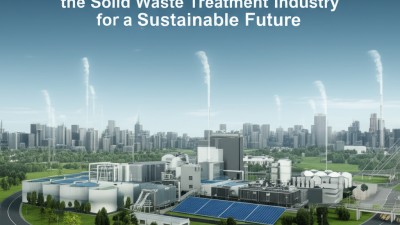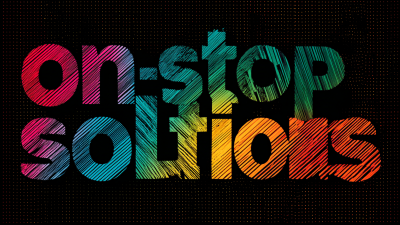The Solid Waste Treatment Industry is undergoing a transformative shift as innovative strategies emerge to address the growing challenges of sustainability and resource management. According to the Global Solid Waste Management Market Report, the industry is projected to grow at a CAGR of 6.1%, reaching an estimated value of $2.7 trillion by 2026. This growth is fueled by an increasing awareness of environmental issues and the urgent need for effective waste management solutions.

Modern approaches, such as waste-to-energy technologies and advanced recycling methods, are being implemented to not only reduce landfill dependency but also to recover valuable resources from waste streams. As cities worldwide face escalating waste generation—expected to reach 3.4 billion tons annually by 2050 according to the World Bank—embracing these innovative strategies is imperative for creating a sustainable future. This report highlights key insights and actionable tips for stakeholders within the Solid Waste Treatment Industry to navigate this evolving landscape effectively.
Innovative technologies are revolutionizing the solid waste treatment industry, particularly in the realms of waste sorting and processing. Automation, driven by artificial intelligence and machine learning, is proving essential for enhancing the efficiency of waste separation. Advanced sorting systems can now identify and categorize materials with remarkable precision, significantly reducing manual labor and increasing throughput. These systems utilize sensors and algorithms to distinguish between various types of recyclable materials, ensuring that valuable resources are extracted from the waste stream and minimizing contamination.
Moreover, emerging technologies such as robotic sorting arms are transforming how waste is processed. These robots can handle complex sorting tasks at speeds unattainable by humans, leading to higher recovery rates of recyclables and organic materials. In addition, smart waste bins equipped with IoT sensors provide real-time data on waste levels and composition, allowing municipalities to optimize collection routes and schedules. This data-driven approach not only enhances operational efficiency but also empowers cities to adopt more sustainable waste management practices, ultimately contributing to a greener future.
The circular economy practices are increasingly becoming integral to modern waste management strategies, aimed at reducing waste generation and promoting sustainability. By emphasizing the reuse and recycling of materials, these practices challenge the traditional linear economy model of “take, make, dispose.” Instead, they encourage businesses and consumers to rethink their consumption patterns and the lifecycle of products. For instance, industries are now exploring innovative designs that facilitate disassembly and product recovery, ensuring that materials can be reintegrated into the production cycle.
Moreover, community engagement plays a critical role in the success of circular economy initiatives. Educational programs and awareness campaigns empower individuals to adopt sustainable practices, such as sorting waste correctly and supporting local recycling programs. Furthermore, advancements in technology, such as waste-to-energy systems and smart waste management solutions, enable more efficient resource recovery processes. Through collaboration between governments, businesses, and the public, circular economy strategies not only minimize waste generation but also foster a sustainable future where resources are valued and conserved.
The sustainable future of solid waste treatment is increasingly reliant on
innovative biotechnology applications that promote resource recovery and
environmental protection. By integrating anaerobic biotechnology into
wastewater treatment processes, communities can produce methane and harness
renewable energy, aligning with global carbon neutrality goals. This dual-path
exploration not only reduces waste but also transforms it into valuable energy
sources, showcasing the potential of microbial metabolic diversity in waste
management.
Microalgae have emerged as a powerhouse in addressing sustainability challenges.
Recent advancements in cultivation techniques, such as ultrasound-assisted
methods, have enhanced protein production from microalgae, providing a sustainable
alternative to traditional protein sources. Furthermore, microbial fuel cells
(MFCs) are paving the way for eco-friendly energy generation from organic waste,
indicating the versatility of microbial technologies in mitigating environmental
issues.
Tips:
Consider investing in biotechnological innovations that facilitate
resource recovery in your local waste management systems. Explore potential
partnerships with research institutions to adopt cutting-edge technologies.
Engaging local communities in sustainable practices can also amplify the impact
of these advancements.
Community engagement plays a pivotal role in effective solid waste management, as it fosters a sense of ownership and responsibility among residents. By actively involving community members in the decision-making process, local governments can ensure that waste management strategies are tailored to the specific needs and preferences of the population. Programs such as workshops, open forums, and educational campaigns can help raise awareness about the importance of recycling and proper waste disposal, ultimately leading to increased participation in these initiatives.
Furthermore, innovative engagement strategies can include the use of technology to facilitate communication and feedback. Mobile applications and social media platforms provide residents with easy access to information about local waste management services, schedules, and guidelines. These tools not only promote transparency but also allow communities to voice their concerns and suggestions, creating a collaborative atmosphere. By leveraging technology and community involvement, the solid waste treatment industry can develop more sustainable practices that align with the values and behaviors of the community, paving the way for a healthier environment.
| Strategy | Description | Community Involvement | Impact on Sustainability |
|---|---|---|---|
| Source Separation | Encouraging citizens to separate recyclables at home to improve recycling rates. | Increased participation in local recycling programs. | Reduces landfill waste, promotes recycling. |
| Community Workshops | Educational workshops on waste reduction and recycling practices. | Addresses local environmental concerns and promotes community engagement. | Enhances awareness and reduces overall waste generation. |
| School Programs | Programs designed to teach children about waste management and sustainability. | Encourages students and families to actively participate in recycling efforts. | Fosters a culture of sustainability among the next generation. |
| Local Clean-Up Events | Organizing clean-up events to remove litter from local parks and streets. | Brings community members together for a common cause. | Improves community aesthetics and encourages responsible waste disposal. |
| Incentive Programs | Providing rewards for individuals and businesses that practice sustainable waste management. | Motivates broader participation in waste reduction initiatives. | Directly contributes to waste reduction and promotes eco-friendly practices. |
Policy frameworks play a crucial role in fostering innovation within the solid waste treatment sector. Governments around the world are increasingly recognizing that robust regulatory environments can incentivize the development of new technologies and methods for waste management. These frameworks often include financial incentives such as grants, subsidies, and tax breaks for companies that invest in eco-friendly waste treatment solutions. By establishing clear guidelines for sustainability standards and encouraging public-private partnerships, policymakers can create an environment ripe for innovation.
Moreover, comprehensive policies that emphasize research and development in waste treatment can lead to breakthroughs that significantly improve efficiency and effectiveness in managing solid waste. Initiatives like circular economy strategies and zero-waste goals push organizations to rethink their waste processes, emphasizing not just safe disposal but also resource recovery and recycling. As these policies evolve, they not only support businesses in their innovative endeavors but also pave the way for a more sustainable future in waste management, benefiting communities and the environment alike.






